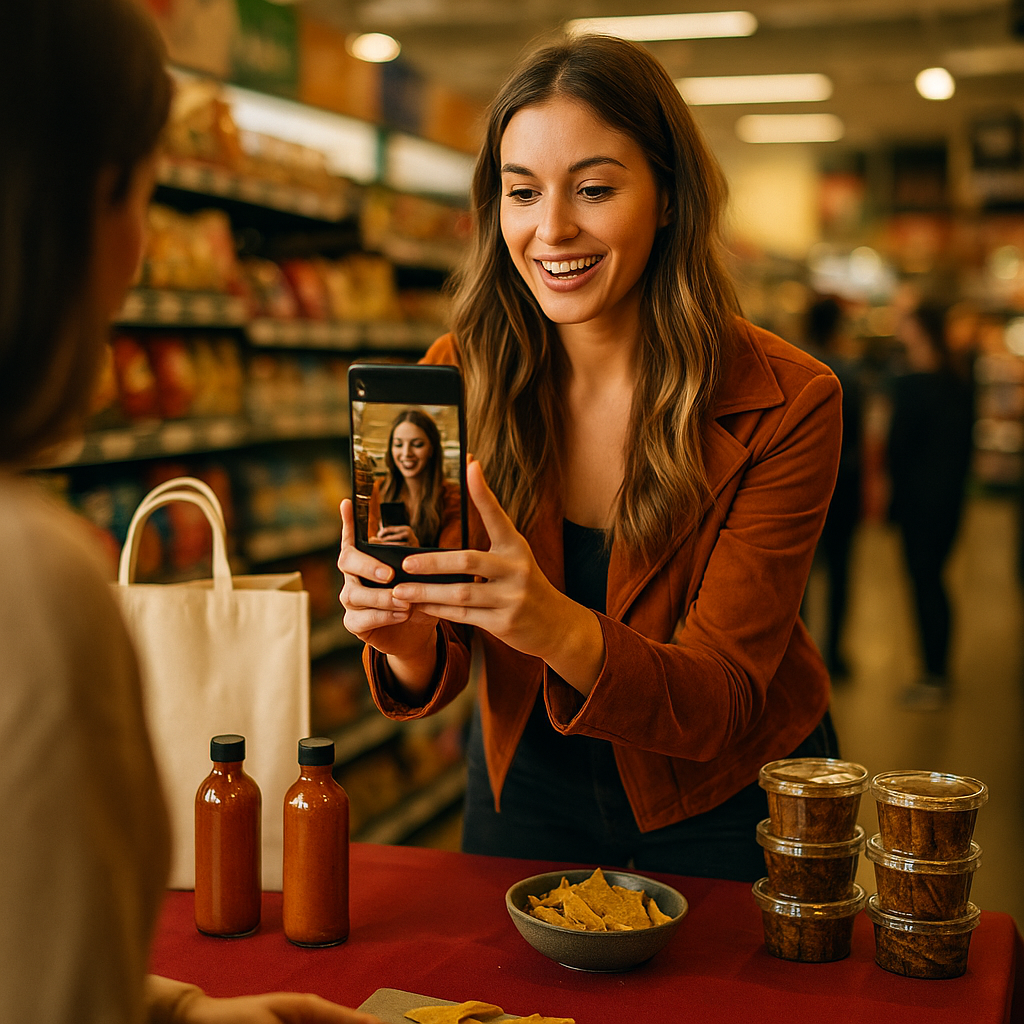Organizing a successful in-store event that leveraged local influencers can transform regional brand presence and generate meaningful results. Brands benefit from direct engagement, real-time feedback, and influencer amplification. How do you create an event that accomplishes all this? Let’s explore a recent case study and discover the winning strategies behind its standout success.
Understanding the Power of Local Influencers in In-Store Marketing
Brands harnessing local influencer collaborations tap into authentic, community-based marketing. In recent digital marketing trends, 84% of consumers say they trust recommendations from people they know, and local influencers often have tight-knit followings that trust their opinions implicitly. Their endorsement at an in-store event bridges online engagement and foot traffic, increasing a brand’s credibility and reach within the targeted locality.
This dynamic was central to the recent case of “Luxe Beauty Bar,” a mid-size cosmetics retailer seeking to boost their new product launch in Portland’s Pearl District. By recruiting relevant micro-influencers—those with 5,000 to 25,000 followers who focus on beauty and lifestyle—the brand could ensure authentic promotion embedded in real connections.
Planning a Community-Focused In-Store Event
Successful in-store event planning hinges on understanding the target audience’s preferences and local culture. Luxe Beauty Bar’s marketing team conducted social media pulse checks, monitored trending hashtags, and surveyed customers to learn what themes would resonate most. A “Sip & Selfie” soirée with skincare demonstrations, exclusive product sampling, and limited edition gift bags was chosen to align with local interests and maximize attendance.
Key steps included:
- Inviting the right influencers: Participants were carefully selected for relevance, community involvement, and audience engagement.
- Co-creation of event content: Influencers collaborated on event themes, signage, and live activations, promoting buy-in and anticipation.
- Personalized invitations: Sending hand-delivered invites and social media teasers to generate buzz and foster exclusivity.
Executing the Event: Real-Time Engagement and Brand Storytelling
On the day of the event, local influencers amplified reach by livestreaming, posting real-time stories, and encouraging attendees to use a branded hashtag. The in-store environment was designed for shareability—featuring selfie stations, interactive product displays, and opportunities to meet company founders.
Throughout the evening, influencers shared their honest reactions, answered audience questions, and hosted Q&A sessions via Instagram Live. Staff captured participant testimonials on video, adding further content for future marketing. Attendees described the event as “personal,” “fun,” and “like meeting old friends,” showcasing the value of experience-driven connections in retail marketing.
Measuring Campaign Impact: Event ROI and Social Proof
The event’s success was measured through a blend of traditional metrics and digital analytics. Over 200 guests attended, surpassing RSVP expectations. Influencer-led content generated over 25,000 local impressions within 48 hours, as tracked by campaign monitoring tools. A post-event survey revealed:
- 89% of guests discovered Luxe Beauty Bar via an influencer invite
- 68% posted about their experience on social media
- Sales of featured products increased by 39% in the following week
Media coverage in local lifestyle blogs, coupled with shared user-generated content, created compelling social proof and bolstered Luxe Beauty Bar’s online reputation—key trust signals in the eyes of both Google and future customers.
Lessons Learned: Building Long-Term Influencer Partnerships
A major takeaway was the importance of prioritizing relationships over one-off promotions. Luxe Beauty Bar maintained continued engagement with local influencers after the event, providing exclusive previews, co-branded campaigns, and ongoing perks. This approach nurtured a vibrant advocate community, resulting in sustained word-of-mouth and repeat in-store visits.
Real, mutually beneficial partnerships built through respect, clear communication, and continued collaboration not only drove the one-time event’s success but also formed the foundation for future campaigns. Leveraging local influencers is not a quick fix; it is an investment in ongoing community growth and authentic brand visibility.
Key Takeaways for Retailers Planning an Influencer Event
To replicate this model, retailers should:
- Research and engage influencers valued by their local communities
- Co-create events to ensure buy-in and meaningful experiences
- Design shareable activities and facilitate social content creation onsite
- Track results using both digital insights and in-store feedback
- Develop long-term partnerships for compounding brand benefits
Implementing these steps with a focus on community and credibility can magnify in-store event results, while aligning with Google’s EEAT framework for trustworthy and effective marketing content.
Leveraging local influencers at in-store events delivers immediate buzz and lasting value. By focusing on targeted engagement, authentic relationships, and measurable outcomes, brands can transform their local presence and audience loyalty through well-executed collaborations.
FAQs: In-Store Events With Local Influencers
- Why choose local influencers for in-store events?
Local influencers have deep community connections and can authentically promote your brand to engaged, relevant audiences, driving both event foot traffic and sustained brand loyalty.
- How do you identify the right influencers?
Look for micro-influencers whose content and values align with your brand, who engage meaningfully with local followers, and who have a genuine interest in your market segment.
- What logistics ensure in-store event success?
Plan well in advance, personalize influencer outreach, create engaging in-store and online experiences, and facilitate easy sharing via branded hashtags and photo opportunities.
- How do you measure event effectiveness?
Track both physical metrics (attendance, sales lift) and digital outcomes (impressions, engagement, user-generated content), comparing data pre- and post-event for actionable insights.
- What challenges can arise with influencer collaborations?
Potential issues include mismatched brand values, unclear expectations, or inadequate promotion. Avoid these pitfalls by establishing transparent collaboration agreements and frequent communication.
